
Lochnager Crater at la Boisselle on the Somme in France Stock Photo Alamy
One of the more unusual sites is the Lochnagar Crater, just 4.4 kilometers (almost 3 miles) northeast of Albert , just south of the village of La Boisselle. Sometimes referred to as the Trou de Mine, or mine hole, this huge crater resulted from a mine explosion at 7:28 AM on July 1, 1916. British tunnellers had worked for weeks to dig under the.

Lochnagar Crater, La Boisselle The Lochnagar mine crater o… Flickr
The Y Sap mine was an underground explosive charge, secretly planted by the British during the First World War and ready for 1 July 1916, the first day on the Somme.The mine was dug by the Tunnelling Companies of the Royal Engineers under a German machine-gun nest known as Blinddarm in the front line, on the north side of the village of La Boisselle in the Somme département.
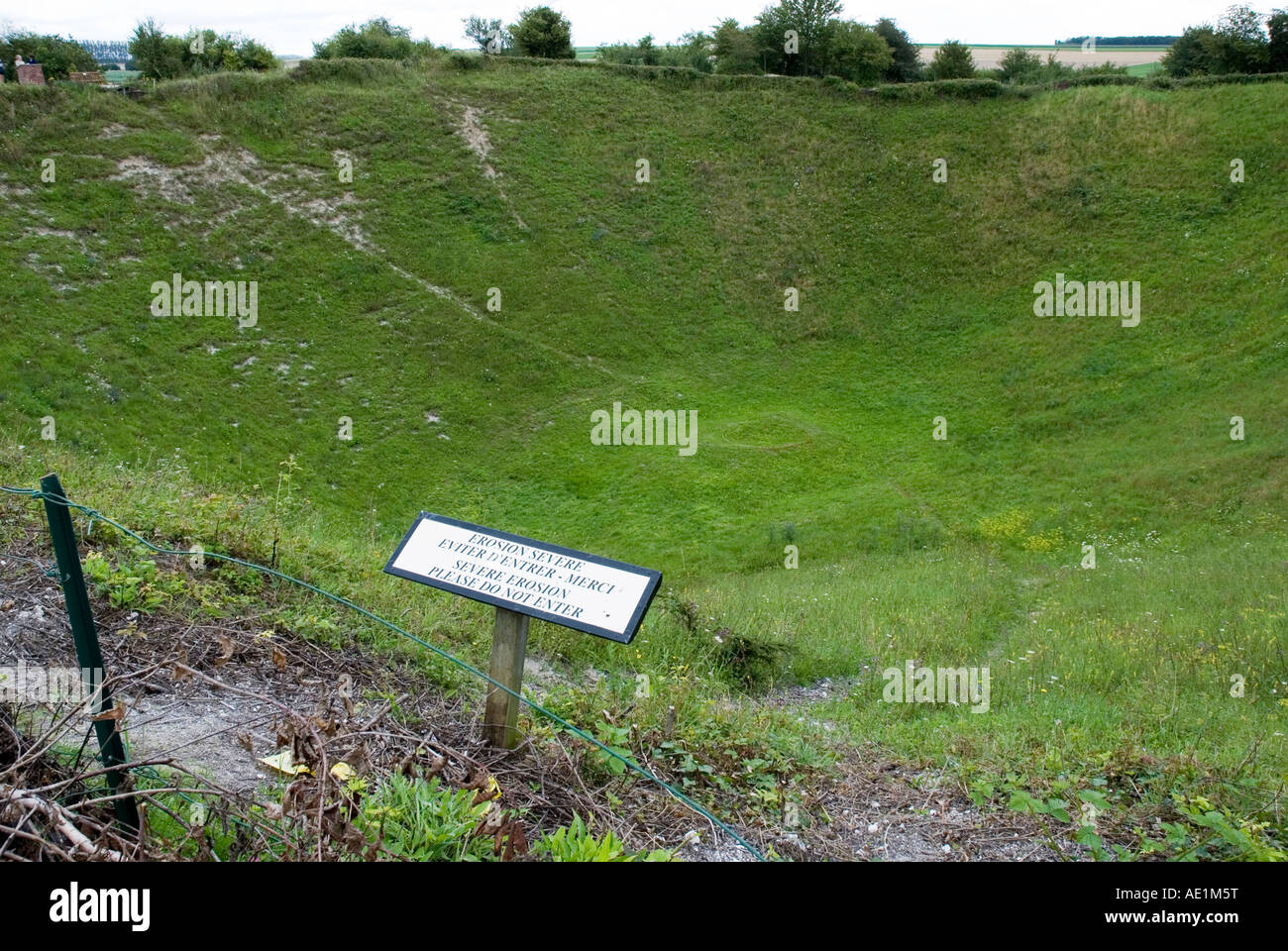
Lochnagar Crater at La Boisselle near Albert in the Somme Stock Photo
A large crater survived the war known as the Lochnagar crater or the Trou de mine de La Boisselle. The Lochnagar mine south of the village of La Boisselle in the Somme département was an underground explosive charge, secretly planted by the British during the First World War, to be ready for 1 July 1916, the first day on the Somme..

Lochnagar Crater (OvillerslaBoisselle) ATUALIZADO 2022 O que saber
Getting to Lochnagar Crater. The address of the location is 3 Route de la Grande Mine, 80300 Ovillers-la-Boisselle, France. Head for the village of La Boisselle which is on the D929 between the town of Albert and the village of Pozières. On arrival at La Boisselle look out for the signs to La Grande Mine.

La Boisselle, cráter de Lochnagar YouTube
The Crater today is very much a place for quiet reflection and the only one of its kind open to the public. 5 minutes from Albert at La Boisselle, "Lochnagar Crater" is a blast hole, now 100 years old, one of a series of explosions which marked the beginning of the Battle of the Somme on 1st July 1916. Its spectacular size (91 metres across and.
Panoramic (stitched) pic of Locnagar Mine Crater, near La Boisselle, in
Along the D20 in La Boisselle a sign points to the right to 'La Grande Mine'. High on a hill outside the village is 'La Grande Mine', a great crater known to.
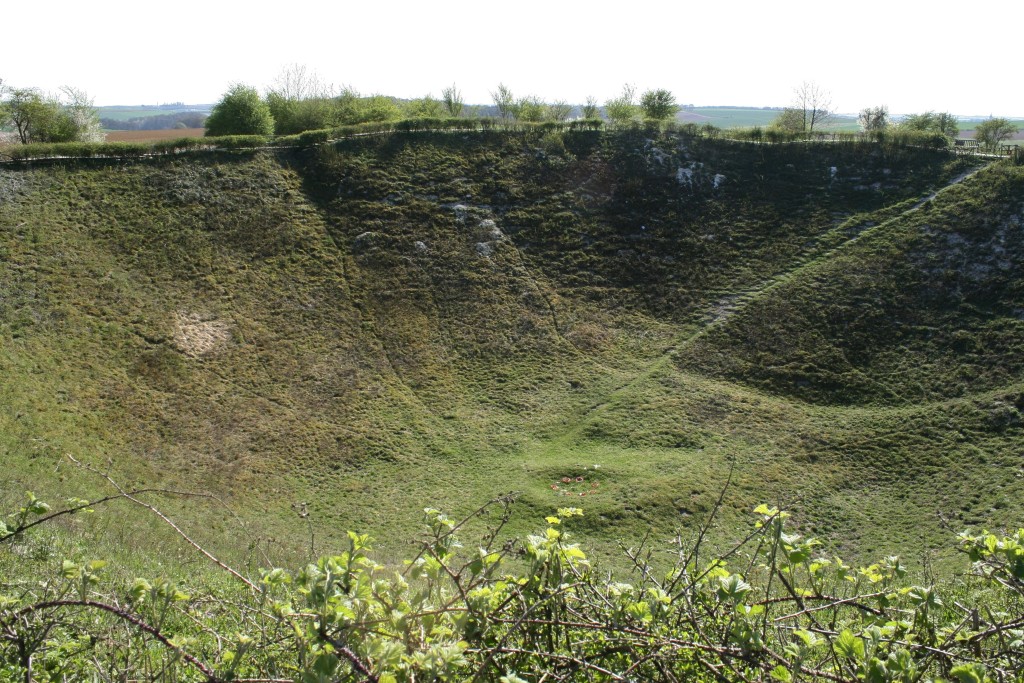
Travels on the Somme Part Fourteen La Boisselle The Lochnagar Crater
Begun a week after La Boisselle was finally captured on 4th July 1916, the cemetery was used until September, by which time it contained 95, mainly Australian, burials. After the war it was greatly increased in size as men originally buried on the surrounding battlefield were brought here but, as is so often the case, many of these men could.

Number 56 Galleries Lochnagar Crater and the Glory Hole La Boisselle
A well preserved mine crater from the first world war. A boardwalk allows you to walk around, information panels tell the story. Follow signs 'La grand mine' from La Boisselle. On road parking just before crater. Sat-navs may direct you down tracks, take care.

Trou de mine de La Boisselle (Lochnagar Crater)(80) YouTube
The Capture of La Boisselle (1-6 July 1916) was a tactical incident during the Battle of Albert, the name given by the British to the first two weeks of the Battle of the Somme.The village of La Boisselle forms part of the small commune of Ovillers-la-Boisselle about 22 mi (35 km) north-east of Amiens in the Somme department in Picardie in northern France.
.JPG/800px-La_Boisselle_crater_(1984).JPG)
FileLa Boisselle crater (1984).JPG Wikipedia
Just as the road from the Lochnagar Crater rejoins the main D929 is the la Boiselle Tyneside memorial seat. This location is just to the north-west of the 'Glory Hole' and also almost exactly on the British front line of July 1st, 1916.. La Boisselle, Pozieres and Contalmaison. This explains the high number of unidentified burials.

The Lochnager Crater, La Boisselle, Somme, France The Loch… Flickr
Location. The Lochnagar Crater is within the Commune of Ovillers-la Boisselle and is located close to the village of La Boisselle to the south of the D929 between the town of Albert and the village of Pozières. On arrival at La Boisselle look out for the signs to the La Grande Mine. the Crater is south south-east of the village a short way.

La Boisselle Study Group
The Lochnagar Crater, La Boisselle. This huge mine crater is 91 metres across and 21 metres deep. Belonging to Englishman Richard Dunning, Lochnagar Crater is the only mine crater still accessible to the public. It marks the beginning of the Battle of the Somme, at 7.28am on 1st July 1916. 8. The Somme 1916 Museum, Albert

Lochnagar crater « La Boisselle » Département 80.
Modern aerial photographs. Images taken 7 October 2011 by Terry Blackwood. All images are copyright La Boisselle Study Group and cannot be reproduced without their permission. Aerial oblique looking from Lochnagar Crater towards La Boisselle. The boundary of the Glory Hole site is marked. Aerial oblique looking from Lochnagar Crater towards the.
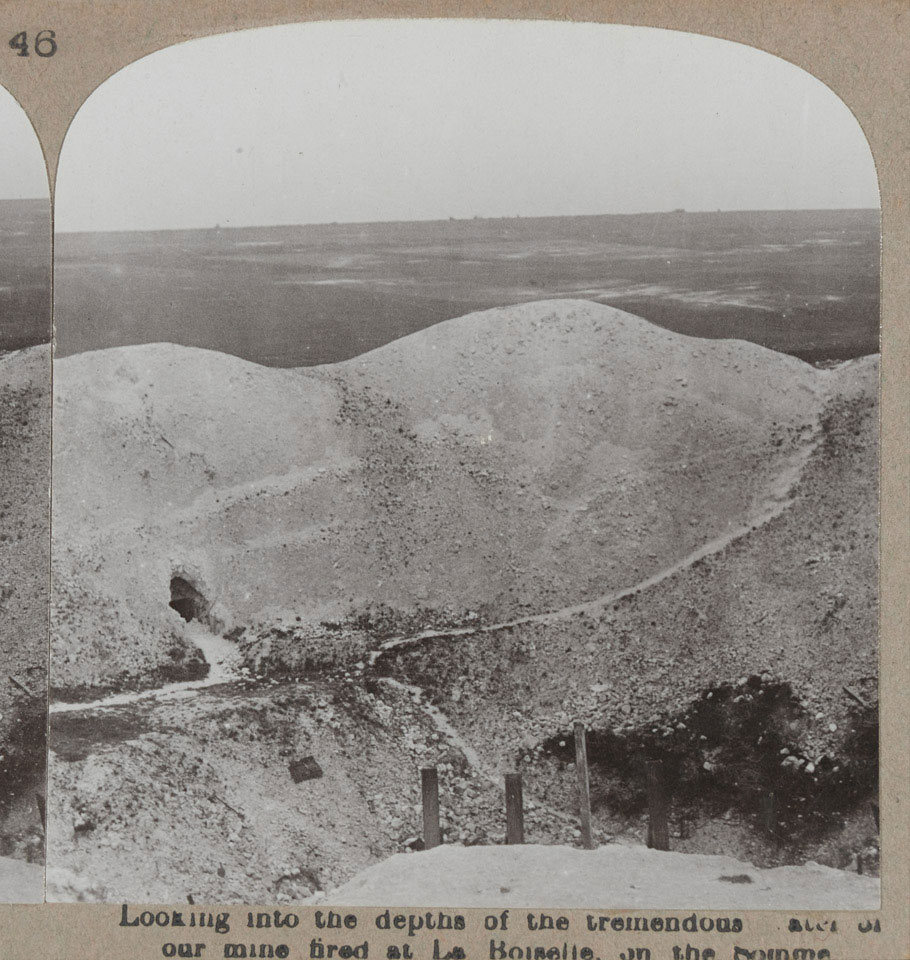
'Looking into the depths of the tremendous crater of our mine fired at
The Lochnagar mine south of the village of La Boisselle in the Somme département was an underground explosive charge, secretly planted by the British during the First World War, to be ready for 1 July 1916, the first day on the Somme.The mine was dug by the Tunnelling Companies of the Royal Engineers under a German field fortification known as Schwabenhöhe (Swabian Height).

Lochnagar Mine Crater, OvillerslaBoisselle, Somme, France Stock Photo
Lochnagar Crater is located on the southern part of the 1916 Somme battlefields to the south of the D929 Albert-Bapaume road and immediately south of the village of La Boisselle. From the D929 enter the village of La Boisselle in the direction of Contalmaison. Take a right turn which will be signposted to the crater with a sign for "La Grande.
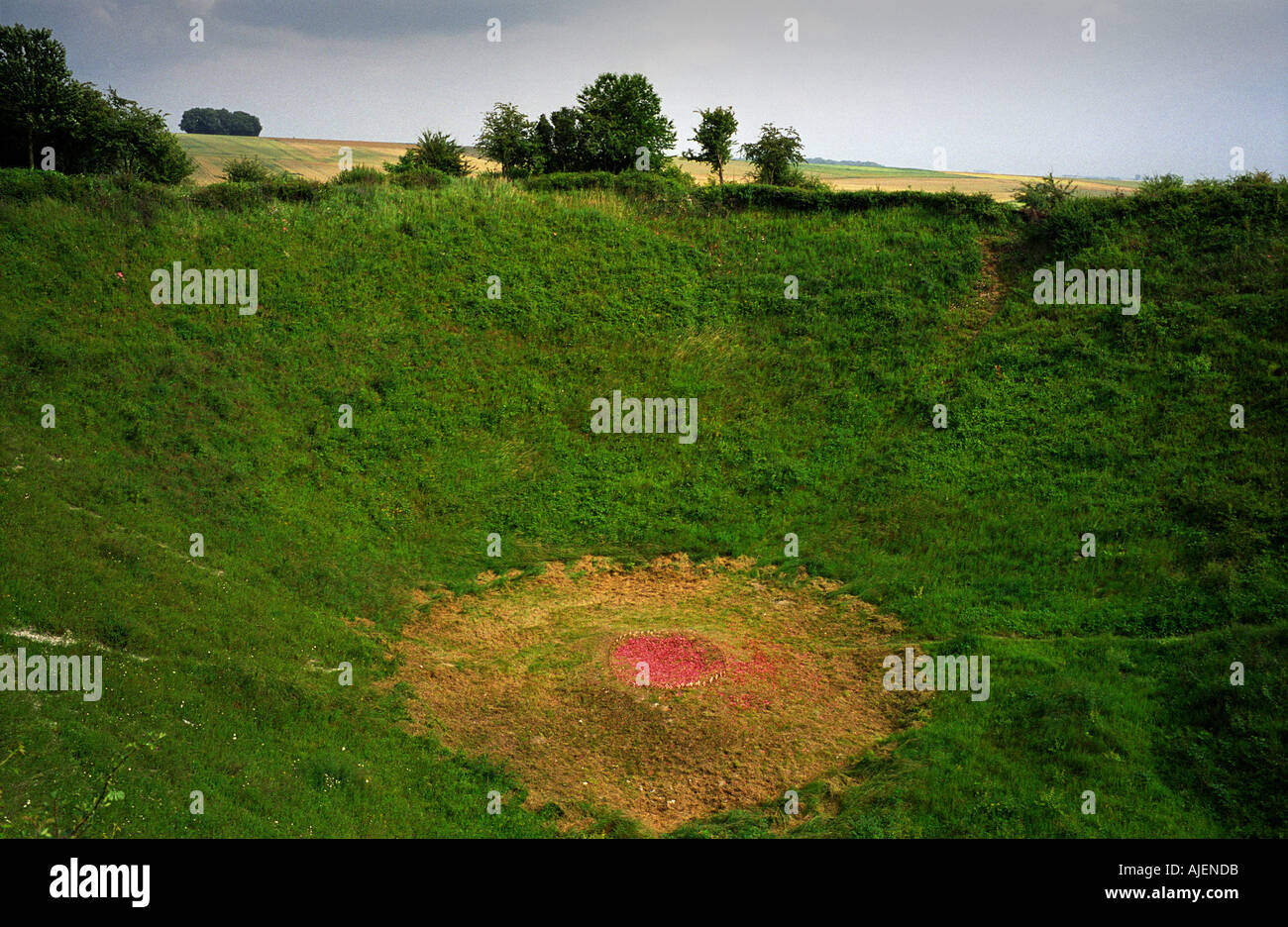
WW1 1914 1918 WORLD WAR ONE LA BOISSELLE LOCHNAGAR CRATER ON THE Stock
Meaning, sufficient explosive was used to, not only break the surface and form a crater, but enough to cause spoil to fall in the surrounding fields and form a lip around the Crater of approximately 15ft high, to protect the advancing British troops from enfilade machine-gun fire from the nearby village of La Boisselle. The Crater was captured.